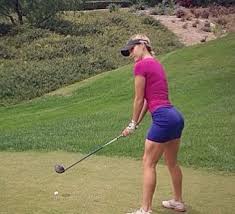The movie “Moneyball” helped us understand that knowing the right player stats in baseball can help baseball teams make the better player selection decisions. Getting a walk is almost as important as getting a single. After all, getting on base is the only way you can score runs. The same applies in golf. Driving to the fairway, Greens in Regulation (GRI), chipping for 1 putt are the most critical factors in lowering your score. You just need an easy way to record your progress to lower your scores.
Of course your score for 18 holes is one way to measure your success but it doesn’t tell you where to focus your practice for your next round. The pros are hiring “stats guys” to advise them. Mark Solda is the chief executive and president of Every Ball Counts. His evaluation of one player revealed that the tour average of making 3 foot or shorter putts was 99.42%. Solda showed the player that if he improved from 98 percent to 99 percent from that distance, he would increase his earnings by $412,000. Amazing fact!
You are not a pro. The pros have amazing stats recorded for every tournament round that they play. Hank Haney talked about the best stats are “strokes gains” for the pros which take into account the weather and competition. Those stats will never be available for your game. Hank suggests that you focus on a step-by-step improvement plan.
Diagnose your weaknesses by analyzing your stats in three key areas:

Plan where your ball will land before you hit it. She looks committed to this shot.
1. Long game: Land in the fairway in a good position to hit the Greens In Regulation.
2. Short Game: Avoid 2 chips, 2 pitchers and 2 sand trap shots. Get on the green.
3. Putting: Avoid 3 putts by landing closer to the hole and learning to read greens.
HOW do you easily keep track of all of this data?
SOLUTION: Code your score card with a letter as you enter your score after each hole.
M– Mishit: Not hit in the center of the club face and lost distance.
R– Rough: Hit the ball into the rough or behind trees or in an avoidable location.
S– Sand: A good approach shot, pitch or chip should miss the sand.
P– Penalty: Water, Lost Ball or Out of Bounds are the dumbest penalties to take.
# of Putts: Almost 50% of your strokes are putts so you need track your 3+ putts and total your putts.
At the end of your round, total up your mistakes and pay attention to your problem areas. For example if you are mishitting your driver or fairway clubs: set a plan to minimize the problem.
1. Your primary focus is to consistently hit every shot in the center of your club face.
2. Increase your length of drives with proper body rotation and wrist lag.
3. Swing in control so that you finish your swing in perfect balance for 3 seconds.
4. Control the direction of your hit for draw or fad to land in the fairway.
5. Plan to avoid hazards by hitting short of them to allow for your perfect chip to within 6 feet of the hole. Eliminate the blow-up holes and possibly save a par.
GOLFSTR+ is a training aid to help you correct the position of your arm or wrist for 6 swing problems. Sort out your big miss and then fix it with the correct swing. Buy one today at www.golfstr.com



Mr Average Golfer CAN never get on a Green in régulation .To do so ,you have to hit THE Ball to 200 yards at least ,which nô Mr Average CAN do .THE only way to improve your scores is to pitch or chip your last shot ( Over régulation) and take one put ,.so chipping ,pitching and putting is what you have to work on .
Good point Raymond. Chipping to one putt is so important for every-ones game including the pros.
Your comment is why USGA and R&A are recommending that golfers who can’t hit the green in regulation should play forward tees. As your game improves you can move to different tees but you really should be able to match tee selection with your ability. That would speed up the level of play at all courses.